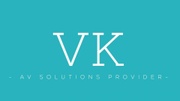In the world of modern technology, visual communication has reached new heights with the emergence of flexible LED displays. These innovative and adaptable screens are changing the way we think about signage, advertising, entertainment, and even architecture. In this article, we'll explore the fascinating world of flexible LED displays, their applications, benefits, and the exciting possibilities they offer.
What Are Flexible LED Displays?
Flexible LED displays, also known as flexible LED screens or flexible LED panels, are a type of electronic visual display that utilizes light-emitting diodes (LEDs) to create images and videos. What sets them apart is their ability to bend and curve, allowing for creative and dynamic presentations in various environments.
Unlike traditional rigid LED displays, which are typically flat and inflexible, these displays are manufactured using flexible materials such as flexible PCBs (printed circuit boards) and thin-film transistor (TFT) technology. This flexibility enables them to conform to curved surfaces, offering endless design possibilities.
Applications of Flexible LED Displays:
Advertising and Marketing: Flexible LED displays are revolutionizing the advertising industry. They can be used in curved or irregularly shaped spaces, such as shopping mall atriums, to deliver captivating and eye-catching advertisements. These displays are also used in outdoor billboards, trade show booths, and retail spaces to engage customers effectively.
Entertainment: The entertainment industry is embracing flexible LED displays to enhance live performances and events. They can be used as stage backdrops or wrap around set pieces, providing stunning visuals that immerse the audience in the show. Flexible LED screens are also used in sports stadiums for live broadcasts and scoreboards.
Architecture and Interior Design: Architects and interior designers are incorporating flexible LED displays into building facades, ceilings, and walls to create visually stunning environments. These displays can change the entire ambiance of a space with dynamic, interactive, and customizable lighting.
Information Displays: Airports, train stations, and other transportation hubs are using flexible LED displays for passenger information, wayfinding, and advertising. These displays can be seamlessly integrated into architectural features, making them both functional and aesthetically pleasing.
Retail: In the retail sector, flexible LED displays are used for product displays, interactive kiosks, and digital signage. They provide a modern and dynamic way to showcase products and promotions, attracting shoppers' attention.
Gaming and Simulation: Flexible LED displays are ideal for gaming setups and simulations, offering immersive experiences with curved screens that wrap around the player's field of view. They are also used in flight simulators and military training applications.
Benefits of Flexible LED Displays:
Versatility: The ability to bend and curve makes flexible LED displays incredibly versatile. They can adapt to various architectural designs and unconventional spaces, opening up new possibilities for creativity.
High Resolution: These displays offer high-resolution imagery and vibrant colors, ensuring that content is visually stunning and attention-grabbing.
Energy Efficiency: LED technology is energy-efficient, reducing power consumption compared to traditional display technologies. This makes flexible LED displays more environmentally friendly and cost-effective.
Durability: Flexible LED displays are designed to withstand environmental factors such as dust, moisture, and temperature variations, ensuring long-lasting performance.
Customization: Content on flexible LED displays can be easily customized and updated in real-time, allowing for dynamic and interactive presentations.
Wide Viewing Angles: These displays provide wide viewing angles, ensuring that the content is visible from different perspectives.
Future Possibilities:
The future of flexible LED displays holds even more exciting possibilities. As technology continues to advance, we can expect to see:
Thinner and Lighter Displays: Advances in materials and manufacturing processes will likely lead to even thinner and lighter flexible LED displays, making them easier to install and transport.
Foldable and Rollable Screens: Imagine displays that can be rolled up or folded like a sheet of paper, offering unmatched portability and flexibility.
Integration with Augmented Reality (AR) and Virtual Reality (VR): Combining flexible LED displays with AR and VR technologies will create immersive and interactive experiences that blur the line between the physical and digital worlds.
Increased Interactivity: Enhanced touch and gesture control will enable users to interact with content on flexible LED displays in more intuitive ways.
For More Info:-
Transparent Led Screen Singapore






Comments